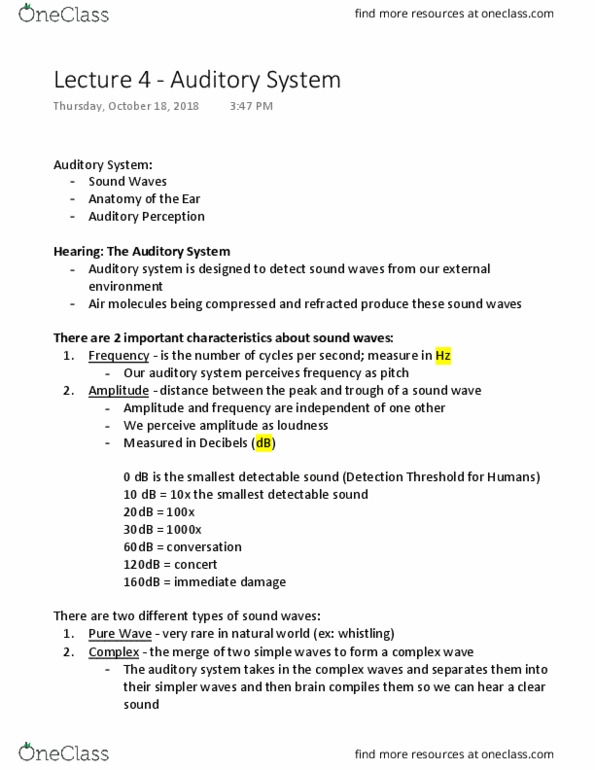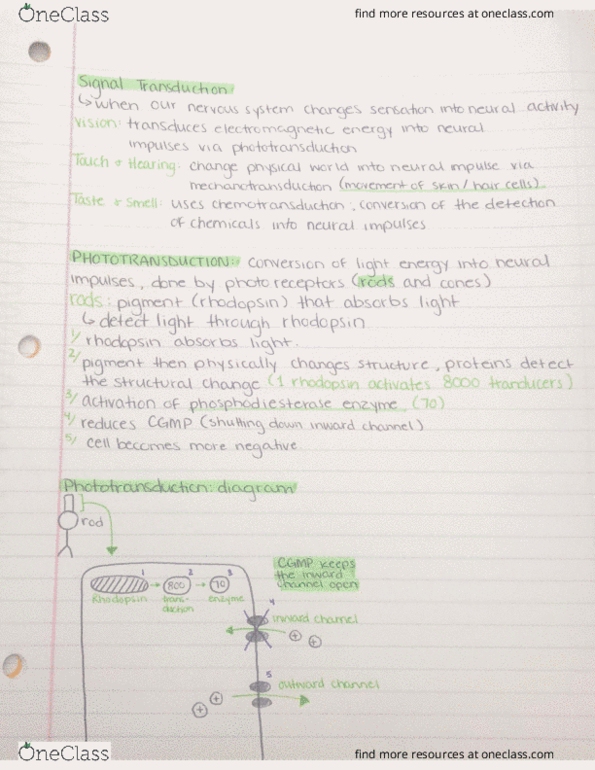PSYO 1011 Lecture Notes - Lecture 13: Auditory System, Sound, Basilar Membrane
PSYO 1011 verified notes
13/26View all
Document Summary
Auditory system is designed to detect sound waves from our external environment. Air molecules being compressed and refracted produce these sound waves. There are 2 important characteristics about sound waves: Frequency - is the number of cycles per second; measure in hz. Our auditory system perceives frequency as pitch: amplitude - distance between the peak and trough of a sound wave. Amplitude and frequency are independent of one other. 0 db is the smallest detectable sound (detection threshold for humans) 10 db = 10x the smallest detectable sound. There are two different types of sound waves: pure wave - very rare in natural world (ex: whistling, complex - the merge of two simple waves to form a complex wave. The auditory system takes in the complex waves and separates them into their simpler waves and then brain compiles them so we can hear a clear sound sound. Range of hearing: humans can detect all frequencies between 20hz and 20000hz.




